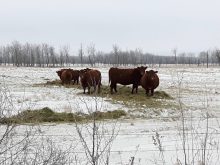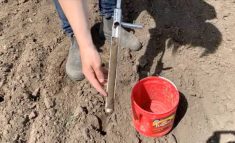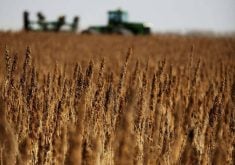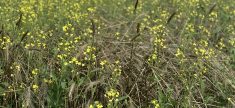In the Jan. 18 issue of Grainews, I discussed developing nitrogen (N) fertilizer recommendations. In this article, I will discuss developing phosphorus (P) fertilizer recommendations.
For many Prairie farmers, phosphorus is the second most limiting soil nutrient in crop production for cereal and oilseed crops. With respect to fertilizer use, phosphorus is second only to nitrogen. Phosphorus is deficient or low in about 80 per cent of Prairie soils. A province-wide Alberta research project conducted with wheat, barley and canola, found that 81 per cent of wheat sites, 90 per cent of barley sites and 72 per cent of canola sites responded to added phosphate fertilizer at 427 research sites.
Read Also
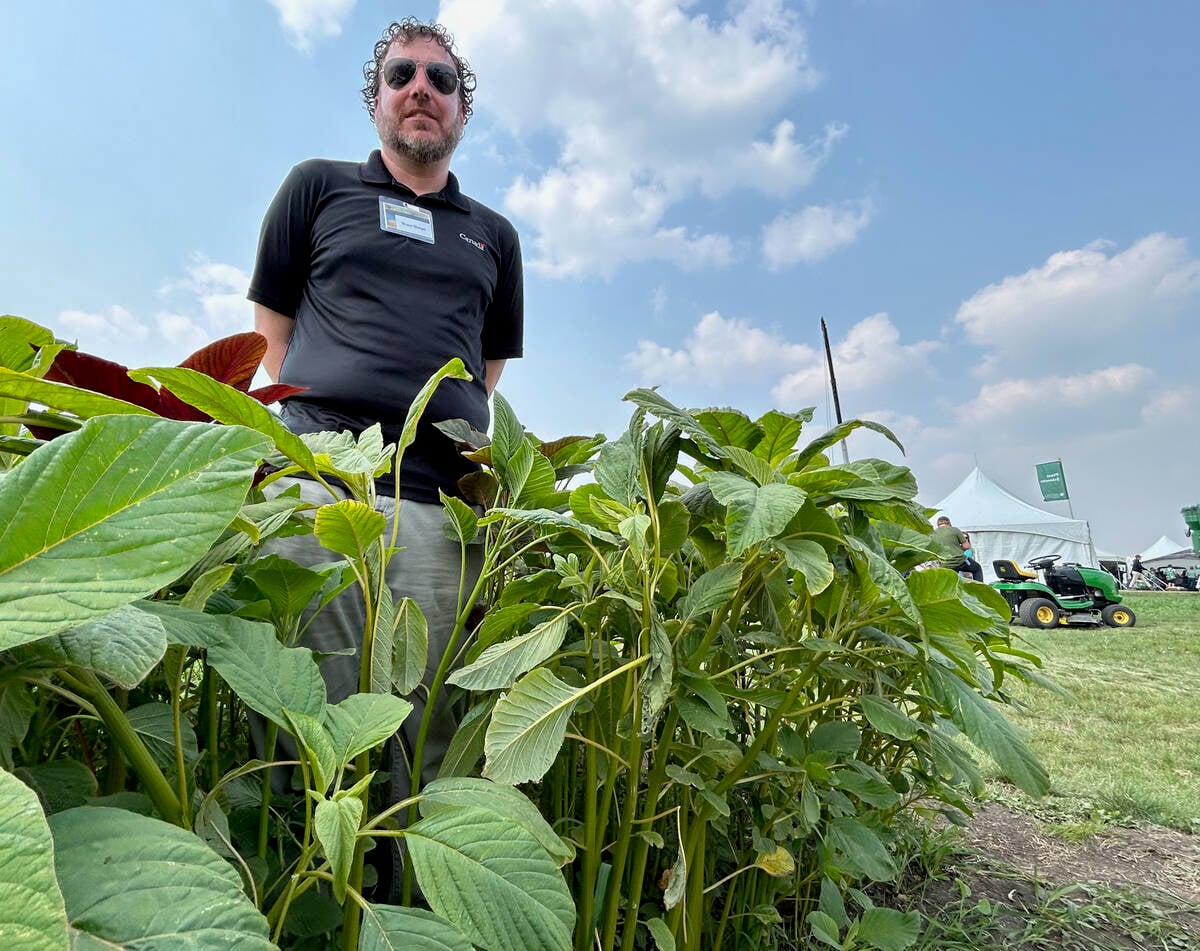
Glufosinate-resistant waterhemp appears in U.S. Midwest
News of glufosinate-resistant kochia in the U.S. is concerning as farmers are losing options to control waterhemp, also of the pigweed family.
In the past 15 to 20 years, many Prairie farmers have been applying phosphorus fertilizer at rates less than crop removal. This has resulted in a slight decline in soil test phosphorus. The dramatic increase in the cost of phosphorus fertilizer may exacerbate this concern in 2022.
However, in manured fields, soil phosphorus levels have increased in fields over the years as a result of repeated manure applications. Manured fields often have the benefit of not needing any phosphorus fertilizer due to more than adequate soil phosphorus levels.
Soil phosphorus
Soil testing is by far the best way to determine which fields and crops require phosphorus fertilizer. A phosphorus soil test tries to estimate plant-available soil phosphorus, which is the portion of soil phosphorus that can be taken up from the soil by plant roots.
Research conducted in Alberta has shown the modified Kelowna soil test method most accurately predicts crop phosphorus fertilizer requirements across a wide range of soils. As a result, the modified Kelowna method is the recommended soil test phosphorus method in both Alberta and Saskatchewan. The Kelowna method is the recommended soil test phosphorus method in British Columbia. In Manitoba, the Olsen phosphorus method (also called the sodium bicarbonate method) is the recommended method.
The Olsen method was developed for alkaline soils and was not designed and is not recommended for soils with a pH less than 7.0. The Olsen extractant has a pH of 8.5 and, therefore, does not perform accurately with acid soils. Soil testing labs in Eastern Canada and the United States often use the Bray soil testing method to make phosphorus fertilizer recommendations. The Bray method was developed for acidic soils and should not be used for soils with a pH greater than 7.0.
The Bray method has not been calibrated to western Canadian soils and, therefore, should not be used to make phosphorus fertilizer recommendations. The Bray method produces different analytical results versus the modified Kelowna or Olsen methods. Alberta and Saskatchewan farmers should insist the modified Kelowna soil test phosphorus method be used for their soils for best 4R recommendations.
The frequency of crop response to phosphorus fertilizer is strongly influenced by environmental conditions, particularly soil temperature and moisture. Therefore, soil tests cannot predict with 100 per cent accuracy when crops will respond to added phosphorus fertilizer.
For example, at research sites in Alberta, the observed response to phosphorus fertilizer, particularly with wheat, barley and canola, tended to be greater in wetter, cooler spring soil conditions versus warmer spring conditions. Generally, farmers can expect greater crop response to phosphorus fertilizer in a year with wetter and/or cooler spring conditions than in a spring with warmer, drier conditions.
Interpreting soil test phosphorus
Across Western Canada, crop response to phosphorus fertilizer has been correlated with the amount of soil phosphorus extracted from the zero- to six-inch sampling depth. Therefore, always sample the zero- to six-inch depth separately from deeper depth samples to accurately determine phosphorus fertilizer requirements. This is also the case for potassium (K).

A soil testing lab will provide the level of plant-available soil phosphorus, usually in pounds per acre. Table 1 above provides a guide for soil phosphorus levels for the modified Kelowna method. Generally, cereal and oilseed crops grown on soils with a very low or low soil test phosphorus level have a high probability of response to phosphorus fertilizer.
Phosphate fertilizer recommendations for various crops are provided on the provincial ag websites for British Columbia, Alberta, Saskatchewan and Manitoba. As an example, I will refer to the Alberta Agriculture publication Agdex 542-3, Phosphate Fertilizer Application in Crop Production. Tables 2 and 3 from Agdex 542-3 are provided for wheat. Phosphate fertilizer recommendations in Table 2 (below) are adjusted for soil moisture content at seeding. Table 3 provides an estimate of the probability of response to phosphate fertilizer.

To determine the recommended rate of phosphorus, simply look at the soil test level in Table 2 and match it with the soil zone of your farm. For example, from Table 2, if you are going to grow wheat in the black soil zone and your soil test level is 35 pounds of phosphorus per acre, the recommended phosphate rate would be 30, 35 or 40 pounds P2O5 per acre, depending on whether seedbed moisture conditions are dry, moist or wet, respectively. From Table 3 (below), a farmer could expect a 90 per cent probability of at least a two bushel per acre yield increase and expect a 70 per cent probability of a five bushel per acre yield increase. These probabilities are based on several years of field research. This information is also available for barley and canola on a probability basis. Phosphate recommendations are provided for a number of other crops in the Agdex as well.

Phosphate fertilizer management
Phosphate recommendations are typically based on phosphorus placement with or near the seed, as most field research has shown that placement of phosphorus fertilizer with or near the seed is best for most annual crops. It is very important not to exceed the safe seed-placed phosphorus fertilizer rate for each crop grown. Table 4 (below) shows general safe rates of seed-placed phosphorus. Note that the recommended safe rates vary slightly among the three Prairie provinces.
For cereal crops grown on soils that have medium to low levels of available phosphorus, seed-placed phosphate at recommended rates is equal to or better than banding near the seed and far superior to broadcast and incorporation.

For canola grown on soils with very low to medium levels of available phosphorus, rates up to 15 to 20 pounds per acre P205 can be safely seed-placed if the seedbed utilization is 10 per cent. For higher phosphorus rates, fertilizer should either be side or mid-row banded at the time of seeding or banded prior to seeding. When a field is high in plant-available phosphorus, seed-placed or banded fertilizer at rates of 15 to 20 pounds per acre P205 may result in a yield increase 30 to 50 per cent of the time, depending on soil zone and environmental conditions.
Pulse crops are fairly efficient at taking up soil phosphorus and, therefore, not as responsive as cereal and oilseed crops to phosphorus fertilizer. Research suggests that pea is most responsive to phosphorus fertilizer when soil test phosphorus levels are less than 30 pounds of phosphorus per acre using the modified Kelowna method. Above this, the probably of pea response to phosphorus fertilizer is low.
When soil test phosphorus levels are high, an annual maintenance application of phosphate fertilizer could be considered to meet crop requirements and replenish soil phosphorus that is removed.
Canola has a relatively high demand for soil phosphorus. It is a non-mycorrhizal crop and uses different mechanisms to take up soil phosphorus versus other crops. This leaves soil phosphorus more depleted compared with cereal or pulse crops. Crops that follow canola tend to be more responsive to phosphorus fertilizer. Therefore, it is often wise to add an additional 10 to 15 pounds per acre of phosphate over and above the phosphorus recommendation for cereal or pulse crops when following a canola crop with good yield.
To achieve optimum annual crop production, an adequate amount of phosphorus fertilizer placed close to the seed is important. Most annual crops take up the most of their phosphorus requirements in the first five to six weeks of growth after emergence. Placement of phosphorus with or near the seed row with cereal and oilseed crops has been the best for phosphorus fertilizer uptake. When soil test phosphorus is very low to low and when soil temperatures are cool, starter phosphorus in the seed row is often very beneficial for annual crops. However, it is important not to exceed the safe seed-placed fertilizer rate for each crop.
My next two columns will focus on developing fertilizer recommendations for potassium (K), sulphur (S) and other nutrients.





